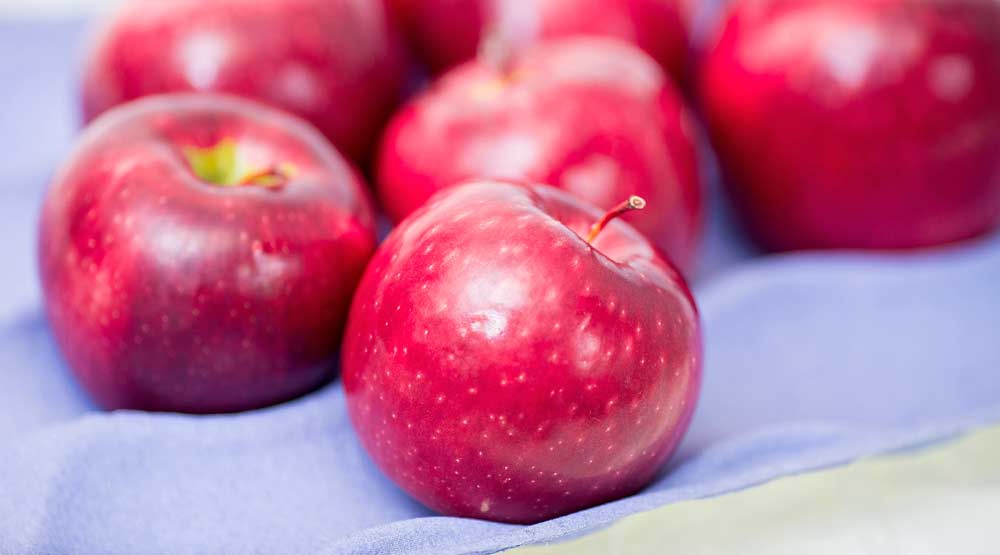
Washington State University has spent two decades developing WA 38, now known as Cosmic Crisp. The first sizable commercial crop will be harvested in 2020. (TJ Mullinax/Good Fruit Grower)
When it comes to grading standards for the new Washington State University apple variety Cosmic Crisp, Washington’s industry is already charting new territory.
Usually, grade standards for varieties are set by state statute, with input from the industry. Once those standards are set, they can be changed, but with time and effort.
Instead for Cosmic Crisp, a grading subcommittee of the industry’s marketing advisory group is establishing grading standards to allow the industry to be more responsive and flexible and meet the changing needs of the market.
Grading standards will be key to ensuring consumers receive a high-quality piece of fruit each time, said subcommittee chairman Dave Allan of Allan Bros., a longtime growing family in Washington’s Yakima Valley.
Already, minimum color standards remain one area of debate. There likely will be two grades for color, but there’s debate over whether there should be a so-called “utility grade,” he said.
Those on one side of the argument believe selling a “utility” color grade could diminish the Cosmic Crisp brand early in the marketing push, while others believe that if people and markets are willing to buy it, why not service them, he said. “That’s really a fantastic debate. We don’t have an answer yet,” Allan said.
Most standards, such as for bruising or russeting, will likely remain the same as other varieties.
But the subcommittee is seeking some answers from researchers before deciding on final grade standards:
—Should the industry be marketing apples from 2-year-old trees? Allan said the subcommittee wants researchers to make some recommendations about the quality of apples from young trees.
—Should they set a minimum harvest maturity for shipment? The subcommittee is hoping researchers can provide information on what would be the best indicator — starch, soluble solids, background color — to ensure that consumers receive a good tasting apple from the first shipment of the season through the last.
—What is the eating quality of apples at different color rates, say 60 percent, 40 percent and 20 percent color? That calls for a tasting panel. If eating quality is the same for all three color standards, great, Allan said. “But at 25 percent red, if two-thirds say, ‘That doesn’t taste good,’ we’ve got some good information to say we shouldn’t be marketing those apples because it doesn’t deliver the brand.”
The market is established on the retail shelf, Allan said, adding that he has high hopes. “I think it’s a good enough apple that it will become one of the major apples,” he said. “I’ve worked with quite a few new varieties, and I rate it up there pretty high.” •
– by Shannon Dininny






Leave A Comment